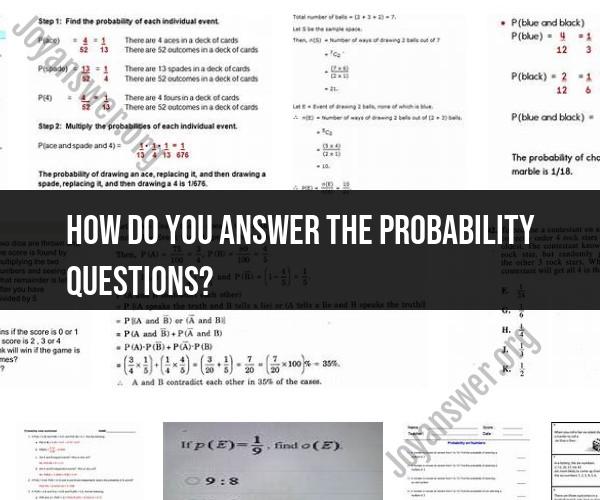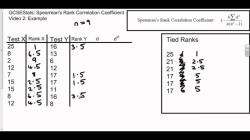How do you answer the probability questions?
Navigating probability questions can be easier with the right strategies and approaches. Here are some strategies and solutions for common probability problems:
1. Understand the Basics:
- Before tackling complex probability problems, ensure you have a solid understanding of basic probability concepts, such as sample space, events, and probability notation (e.g., P(A), P(B|A)).
2. Use Visual Aids:
- Diagrams, such as Venn diagrams or probability trees, can be incredibly helpful in visualizing and solving probability problems, especially those involving multiple events.
3. Define the Problem:
- Clearly define what you're trying to find. Are you looking for the probability of an event happening, the probability of two events happening together, or something else?
4. Identify the Sample Space:
- Determine all possible outcomes (the sample space) for the given scenario. This step is crucial in calculating probabilities accurately.
5. Break It Down:
- If you're dealing with a complex probability problem involving multiple events, break it down into smaller, more manageable steps. Calculate the probabilities for each step and then combine them as needed.
6. Use Complementary Probability:
- Sometimes it's easier to calculate the probability of the complement (opposite) of an event and subtract it from 1. For example, if you want to find the probability of not getting a red ball from a bag with red and green balls, calculate the probability of getting a green ball and subtract it from 1.
7. Be Careful with Conditional Probability:
- Conditional probability (P(A|B)) is the probability of event A happening given that event B has already occurred. Use the formula P(A|B) = P(A and B) / P(B), but make sure you have the correct values for each part.
8. Use Probability Laws:
- Familiarize yourself with probability laws, such as the addition rule (P(A or B) = P(A) + P(B) - P(A and B)) and the multiplication rule (P(A and B) = P(A) * P(B|A)), and apply them appropriately.
9. Practice Bayes' Theorem:
- Bayes' Theorem is useful for updating probabilities when new information becomes available. It's particularly helpful in Bayesian statistics and probability.
10. Review Past Problems:
- To get better at probability questions, review past problems and their solutions. This will help you recognize patterns and strategies that can be applied to new problems.
11. Be Patient:
- Probability problems can be challenging, so don't rush. Take your time to understand the problem, calculate probabilities accurately, and double-check your work.
12. Seek Help When Needed:
- If you're stuck on a probability problem, don't hesitate to seek help from a teacher, tutor, or online resources. Sometimes a different perspective can make all the difference.
13. Practice Regularly:
- Like any skill, improving your probability-solving abilities requires practice. Work through a variety of probability problems to build confidence and proficiency.
Probability questions can vary widely in complexity, so it's essential to approach each problem systematically and adapt your strategy as needed. With practice and a solid understanding of probability fundamentals, you'll become more adept at navigating probability questions effectively.













